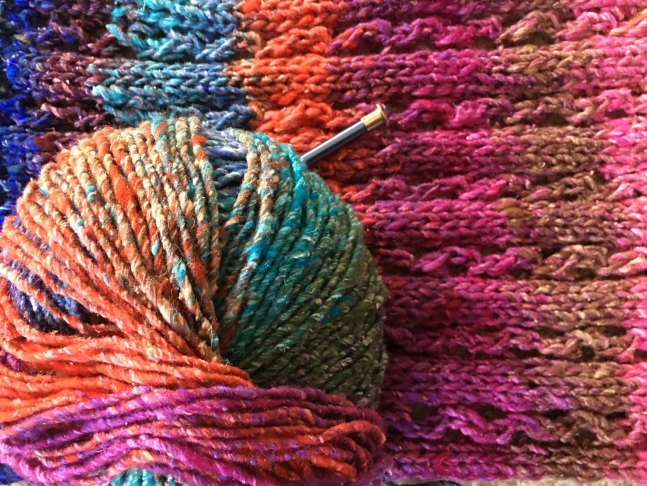- Community >
- Blog Central >
- Blog by deleted Shellys Handmade Creations >
- Math in Knitting?
| May 8 |
Math in Knitting?
|

Math has always been a love and hate relationship for me. I love it when I understand the equation and I hate it when I don’t have a clue what is being asked of me. In grade school math was very easy for me to understand. But as I grew older, math in junior high and high school – whew! I shivered now as I go down memory lane. In college, math was at my front door again. At times I felt like I was the only person in class who had no idea of what my professor was talking about. I tried in vain to stay away from math classes as much as possible. However, I was a business major – so math classes were going to be a major part of my curriculum.
I thought to myself, “ok, you can do this”. I gathered my study books and uploaded a bunch of video tutorials and on one occasion (yes, I will admit, I even cried in my math professor’s office). Fortunately, the light bulb went off! I was beginning to understand the language of math. And once I understood the language of math, I understood how to solve the math problem.
This brings me to the question at the beginning of my blog post, “Math in Knitting”? Yes, this is true. When you need to figure out how many stitches and rows are needed to knit an item, math is helpful. At first, I panicked (I wiped away the sweat from my forehead and palms). Once again l said “ok, you can do this”. Then I replacemented the internet on how to calculate stitches and rows to obtain the width and length of a knitted item. I learned that the yarn label provides viable information such as yarn size, knitting needle size and number of stitches and rows per 4-inch square. I was beginning to understand the language of math in knitting.
For example, to find out how many stitches I need to create a 10-inch wide scarf, divide total stitches (as shown on back of the yarn label) by 4 and then multiply that number by the total width needed for the finished knitted project. That’s it! In my example above and using the equation of 9 stitches/4 inches = 2.25 stiches (round this number up) per inch. For a 10-inch wide scarf the number of stitches needed is 20 (2 stitches x 10 inches).
Math in knitting also comes in handy when you need to calculate your gauge swatches, count stitches, multiply stitches to increase or decrease your knitting pattern, convert inches or centimeters, and determine knitting needle sizes to obtain proper stitch width, etc. These math tools are very important as you don’t want to knit something that will be too big or too small (ex. a headband) for the intended person.
Math in knitting is my new friend. I can’t imagine beginning my knitting projects without knowing the language of knitting math. I strive to create knitted items that not only looks good, but also fits good. I think I will be able to do this with less panic (and sweat 😊) with the help of “Math in Knitting” on my side!
- Category:
- All Things Crafts
- Just for Fun
- Tags:
- Knitting















